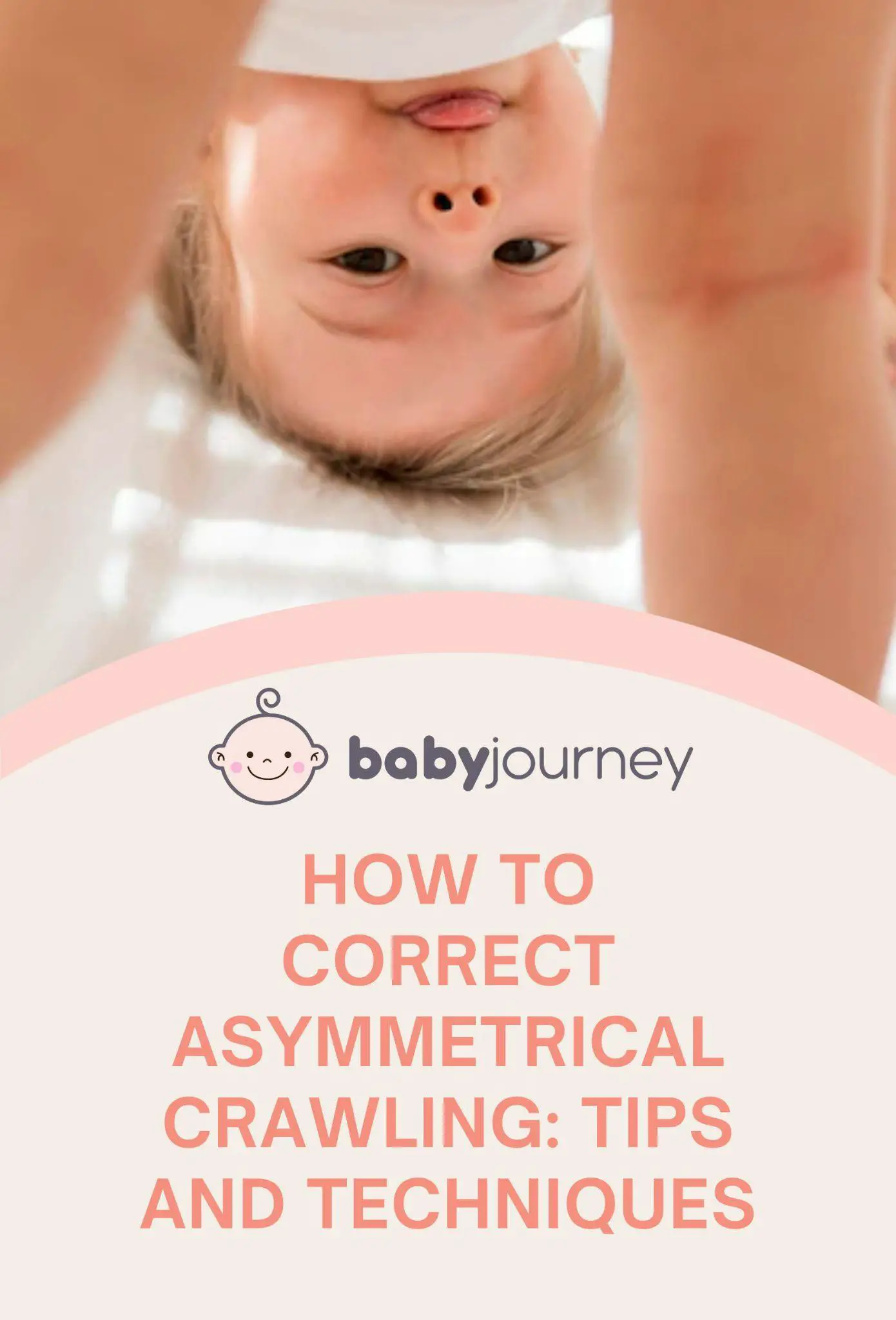Parents been asking: ” How to correct Asymmetrical Crawling?” Asymmetrical crawling is a common developmental milestone in infants. However, it can be a cause for concern if it persists beyond a certain age. Asymmetrical crawling occurs when an infant crawl using one leg and the opposite arm while dragging the other leg and arm behind them. This type of crawling can lead to uneven muscle development and affect the child’s balance and coordination.
Fortunately, there are steps parents and caregivers can take to help fix asymmetrical crawling. One effective technique is to provide physical support to the child during crawling. This can include adjusting the infant’s hands and knees as necessary knee crawling position and gently holding their ankle to restrict the baby crawling use of only one foot. Additionally, encouraging the child to crawl on different surfaces, such as grass or carpet, can help promote more symmetrical movement.
It’s important to note that asymmetrical crawling can be a sign of underlying health issues such as Autism Spectrum Disorders (ASD). If a child continues to exhibit asymmetrical crawling patterns after several attempts to correct it, it’s recommended to consult with a pediatrician or healthcare provider for further evaluation.
Understanding Asymmetrical Crawling
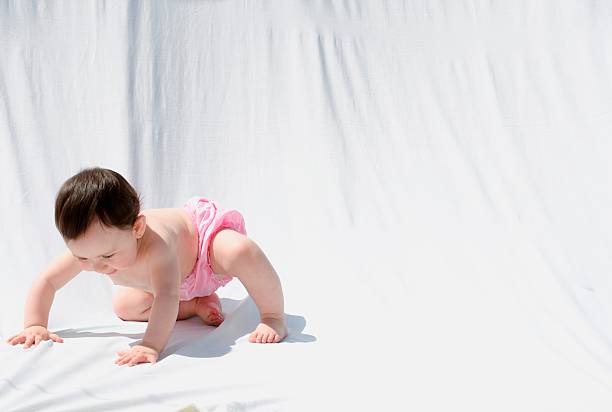
Asymmetrical crawling is when a baby crawls using one side of their body equally, crawling with one leg under their body more than the other. This can be a cause for concern, as it can indicate underlying issues with muscle development or coordination.
There are several factors that can contribute to asymmetrical crawling, including:
- Muscle imbalance or weakness on one side of the body
- Tightness or stiffness in one side of the body
- Visual or sensory issues that affect one side of the body
- Injuries or trauma that affect one side of the body
It’s important to note that asymmetrical crawling is not uncommon, and many babies will eventually grow out of it with proper intervention and guidance. However, if left unaddressed, asymmetrical crawling can lead to long-term issues with muscle tone, balance, and coordination.
Parents and caregivers can help fix asymmetrical crawling by encouraging tummy time and other exercises that promote balanced muscle development. They can also work with a pediatrician or physical therapist to identify any underlying issues and develop a plan for addressing them.
Overall, understanding the causes and potential consequences of asymmetrical crawling is an important step in helping babies develop strong motor skills and achieve important developmental milestones.
Causes of Asymmetrical Crawling
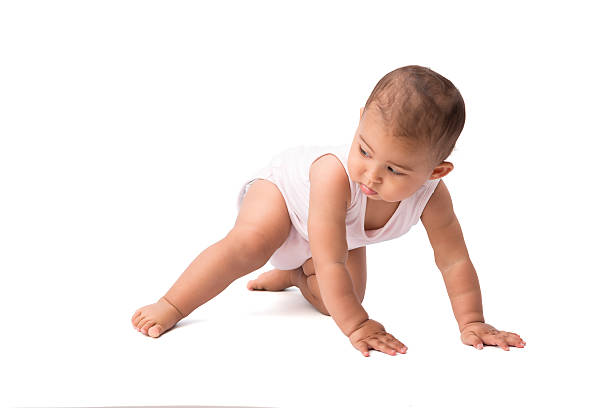
Asymmetrical crawling is a common issue that parents may notice when their baby starts to crawl. It is a non-typical crawling pattern or baby crawl where the baby moves using one side of the body more than the other. This can be caused by a variety of factors, including physical injuries, developmental delays, and congenital conditions.
Physical Injuries
Physical injuries can cause asymmetrical crawling in babies. For example, if a baby has an injury to one side of their body, they may favor the other side when crawling. This can cause asymmetrical crawling as they try to compensate for the injury. Injuries that may cause asymmetrical crawling include muscle strains, sprains, or fractures.
Developmental Delays
Developmental delays can also cause asymmetrical crawling in babies. If a baby has a delay in their gross motor skills, they may not develop the strength and coordination required for a normal crawling pattern. This can cause them to develop an asymmetrical crawling pattern as they try to compensate for their developmental delay.
Congenital Conditions
Congenital conditions can also be a cause of asymmetrical crawling in babies. For example, if a baby has a congenital hip dislocation or a muscle imbalance, they may develop an asymmetrical crawling pattern. Other congenital conditions that may cause asymmetrical crawling include cerebral palsy and spina bifida.
It is important to note that asymmetrical crawling may be a temporary action that a baby will self-correct over time as they become stronger and more sure of their motor skills. However, if a parent is concerned about their baby’s asymmetrical crawling, they should consult with their pediatrician to rule out any underlying medical conditions.
Signs of Asymmetrical Crawling
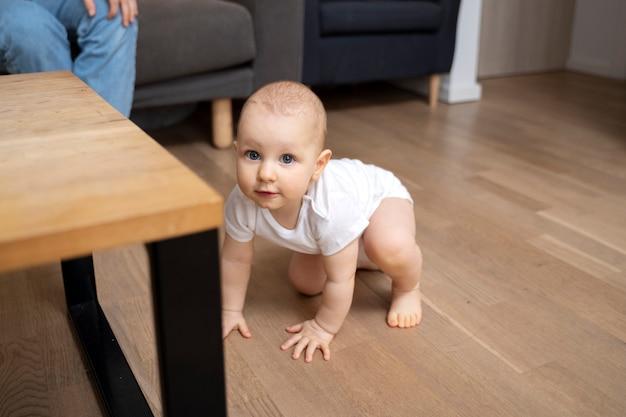
Asymmetrical crawling refers to when a baby crawls using one side of their body more than the other. This can happen when one arm or leg is stronger than the other or when there is an imbalance in the baby’s muscle development. Asymmetrical crawling is common among babies, but it can also be a sign of an underlying issue that needs attention.
Here are some signs that a baby is crawling asymmetrically:
- The baby crawls using one arm or leg more than the other or drags one side of their body.
- The baby has difficulty changing direction when crawling.
- The baby’s head tilts to one side when crawling.
- The baby has trouble sitting up straight or has a curved spine.
- The baby has difficulty standing or walking.
It’s important to note that not all babies crawl symmetrically, and some may take longer to develop their crawling skills than others. However, if a baby consistently shows signs of asymmetrical crawling, it may be a good idea to consult a pediatrician or physical therapist to rule out any underlying issues.
Correcting asymmetrical crawling early on can help prevent future problems with the baby’s motor development. Encouraging the baby to crawl on both sides of their body and providing plenty of tummy time can help strengthen their muscles and improve their coordination. A physical therapist can also provide exercises and techniques to help fix asymmetrical crawling.
Importance of Symmetrical Crawling
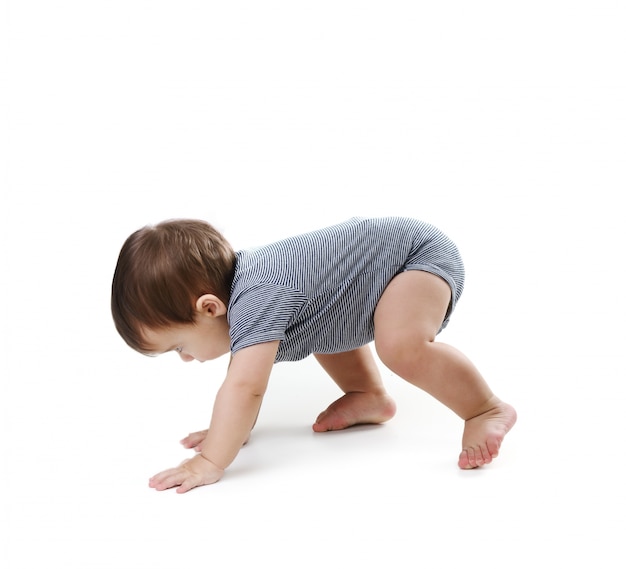
Asymmetrical crawling is a common problem among infants, and it can have long-term effects on their physical development if not corrected. Symmetrical crawling, on the other hand, is associated with many benefits that promote healthy growth and development.
Motor Skills Development
Symmetrical crawling is considered the first skill that provides infants with independent mobility. It helps develop the muscles in the arms, legs, and torso, which are essential for crawling, sitting up, and walking. Crawling also helps improve hand-eye coordination, balance, and spatial awareness, which are critical for many activities throughout life.
Cognitive Development
In addition to motor skills development, symmetrical crawling also promotes cognitive development. Crawling requires infants to use both the sides of the body and their brain simultaneously, which helps develop their visual and spatial processing abilities. It also helps improve their memory, problem-solving skills, and overall cognitive functioning.
Overall, symmetrical crawling is an essential milestone in an infant’s development. It promotes healthy growth and development of both motor and cognitive skills. Parents and caregivers should encourage and support their infants in achieving symmetrical crawling to ensure optimal development.
How to Correct Asymmetrical Crawling

Asymmetrical crawling is a common problem that affects many infants. Fortunately, there are several methods to correct this issue. In this section, we will discuss three effective methods to correct asymmetrical crawling: Physical Therapy, Home Exercises, and Using Assistive Devices.
Physical Therapy
Physical therapy is an effective method to correct the characteristics of asymmetrical crawling. A physical therapist can assess the child’s crawling pattern and identify the underlying causes of asymmetrical crawling. They can then develop a customized treatment plan that includes exercises to strengthen the weak muscles and improve the child’s crawling pattern.
Physical therapy exercises may include:
- Crawling over obstacles: Encouraging the child to crawl over obstacles, such as pillows or cushions, can help them use both limbs equally and reduce the asymmetry in their crawling pattern.
- Weight-bearing exercises: These exercises involve placing weight on the affected limb to strengthen the muscles and improve the child’s crawling pattern.
- Stretching exercises: These exercises help to improve the range of motion of the affected limb and reduce muscle tightness.
Home Exercises
In addition to physical therapy, parents autistic children can also perform home exercises to correct asymmetrical crawling. These exercises can be done at home and are designed to strengthen the weak muscles and improve the child’s crawling pattern.
Home exercises may include:
- Tummy time: Encouraging the child to spend more time on their tummy can help to strengthen the muscles in their neck, back, and shoulders.
- Knee walking: This exercise involves encouraging the child to crawl on their knees instead of their feet. This can help to strengthen the muscles in their legs and improve their crawling pattern.
- Crawling in different directions: Encouraging the child to crawl in different directions can help to improve their crawling pattern and reduce asymmetry.
Using Assistive Devices
Another effective method to correct asymmetrical crawling is to use assistive devices. These devices can help to support the child’s weak limb and encourage them to use both limbs equally.
Assistive devices may include:
- Crawling aids: These devices provide support to the child’s weak limb and encourage them to use both limbs equally.
- Knee pads: Knee pads can help to reduce discomfort and protect the child’s knees while crawling.
- Therapy balls: These balls can be used to strengthen the child’s core and improve their crawling pattern.
In conclusion, there are several effective methods to correct asymmetrical or abnormal crawling patterns, including physical therapy, home exercises, and using assistive devices. By identifying the underlying causes of asymmetrical crawling and implementing these methods, parents can help their child develop a healthy, normal crawling and pattern and avoid future developmental issues.
When to Consult a Professional

If a baby continues to crawl asymmetrically despite attempts to correct it, it may be time to consult a professional. A pediatrician or physical therapist can assess the baby’s development and recommend appropriate interventions.
It is important to seek professional help if asymmetrical crawling persists and is accompanied by other developmental delays or if the baby is not meeting milestones on time. In some cases, asymmetrical crawling can be a sign of underlying medical conditions that require medical intervention.
Parents should also seek professional help if their baby experiences pain or discomfort while crawling, or if they notice any unusual movements or behaviors. A physical therapist can provide exercises and techniques to help correct asymmetrical crawling and prevent further complications.
In addition to seeking professional help, parents can also take steps to promote healthy crawling habits at home. This includes providing a safe and stimulating environment for the baby to crawl properly practice crawling, encouraging tummy time, and promoting healthy muscle development through play and exercise.
Overall, early intervention is key when it comes to correcting asymmetrical crawling. By seeking professional help and taking steps to promote healthy crawling habits, parents can help their babies develop strong, healthy muscles and achieve important developmental milestones on time.
Conclusion

Asymmetrical crawling is a common issue that many parents face when their baby starts crawling. It is important to address this issue as it could lead to long-term physical problems if not corrected.
There are many ways to fix asymmetrical crawling, including physical therapy, exercises, and proper positioning. Parents should consult with their pediatrician or a physical therapist to determine the best course of action for their child.
It is important to note that asymmetrical crawling is not always a cause for concern. Sometimes, babies simply prefer to crawl in a certain way, hence asymmetrical baby crawling and this is not necessarily a problem. However, if parents notice that their baby consistently crawls in an asymmetrical manner, they should seek professional help.
By addressing these types of asymmetrical crawling early on, parents can help their child develop proper movement patterns and prevent potential physical problems in the future. With the right guidance and support, most babies are able to correct their asymmetrical crawling and continue on their developmental journey.
Frequently Asked Questions
How can I encourage my baby to crawl symmetrically?
Tummy time is a great way to encourage your baby to crawl symmetrically. Placing your baby on their tummy for a few minutes several times a day can help strengthen their neck, shoulder, and arm muscles. You can also place toys or objects just out of reach on either side of your baby’s crawls to encourage them to also baby crawl asymmetrically towards them.
What exercises can I do to help correct asymmetrical crawling?
There are several exercises you can do to move hip joints to help correct asymmetrical crawling. These include leg lifts, pelvic tilts, and rolling exercises. You can also encourage your baby to crawl in different directions to help strengthen hip muscles on their weaker side.
Are there any tools or devices that can help correct asymmetrical crawling?
There are several tools and devices that can help correct asymmetrical crawling, including crawling tunnels, balance beams, and therapy balls. However, it is important to consult with a pediatrician or physical therapist before using any of these devices.
When should I be concerned about my baby’s asymmetrical crawling?
If your baby is consistently crawling asymmetrically after 6-8 weeks of your baby crawling asymmetrically, it may be a cause for concern. It is important to consult with a pediatrician or physical therapist to determine the underlying cause and develop a plan for correction.
What are some common causes of asymmetrical crawling?
Asymmetrical crawling can be caused by a variety of factors, including muscle imbalances, hip dysplasia, and scoliosis. It can also be caused by visual orientation issues or issues with body awareness and balance.
Can asymmetrical crawling be a sign of a more serious condition?
In some cases, asymmetrical crawling can be a sign of a more serious condition, such as cerebral palsy or developmental delays. It is important to consult with a pediatrician or physical therapist if you have concerns about your baby’s asymmetrical crawling normal other patterns.
